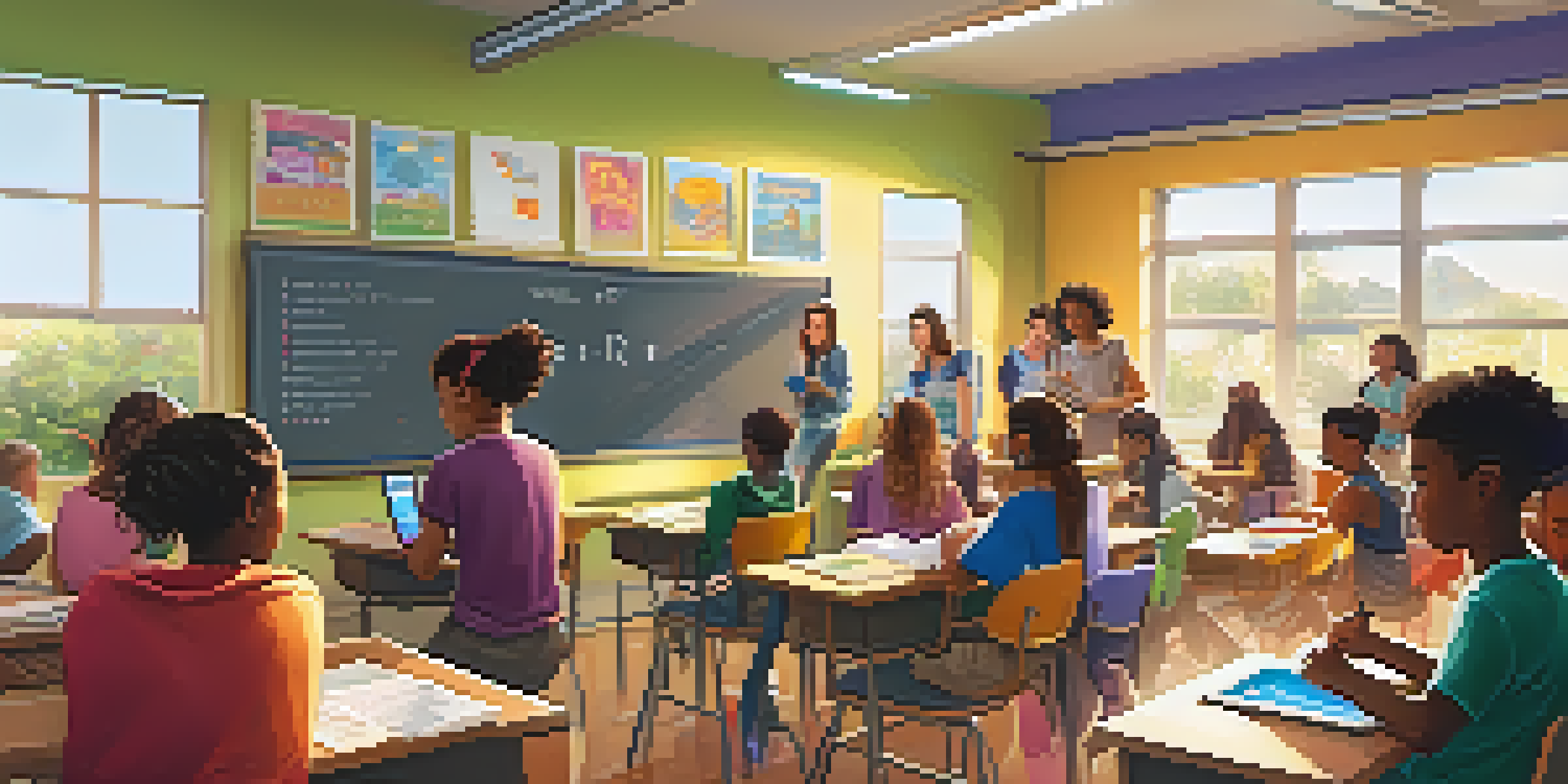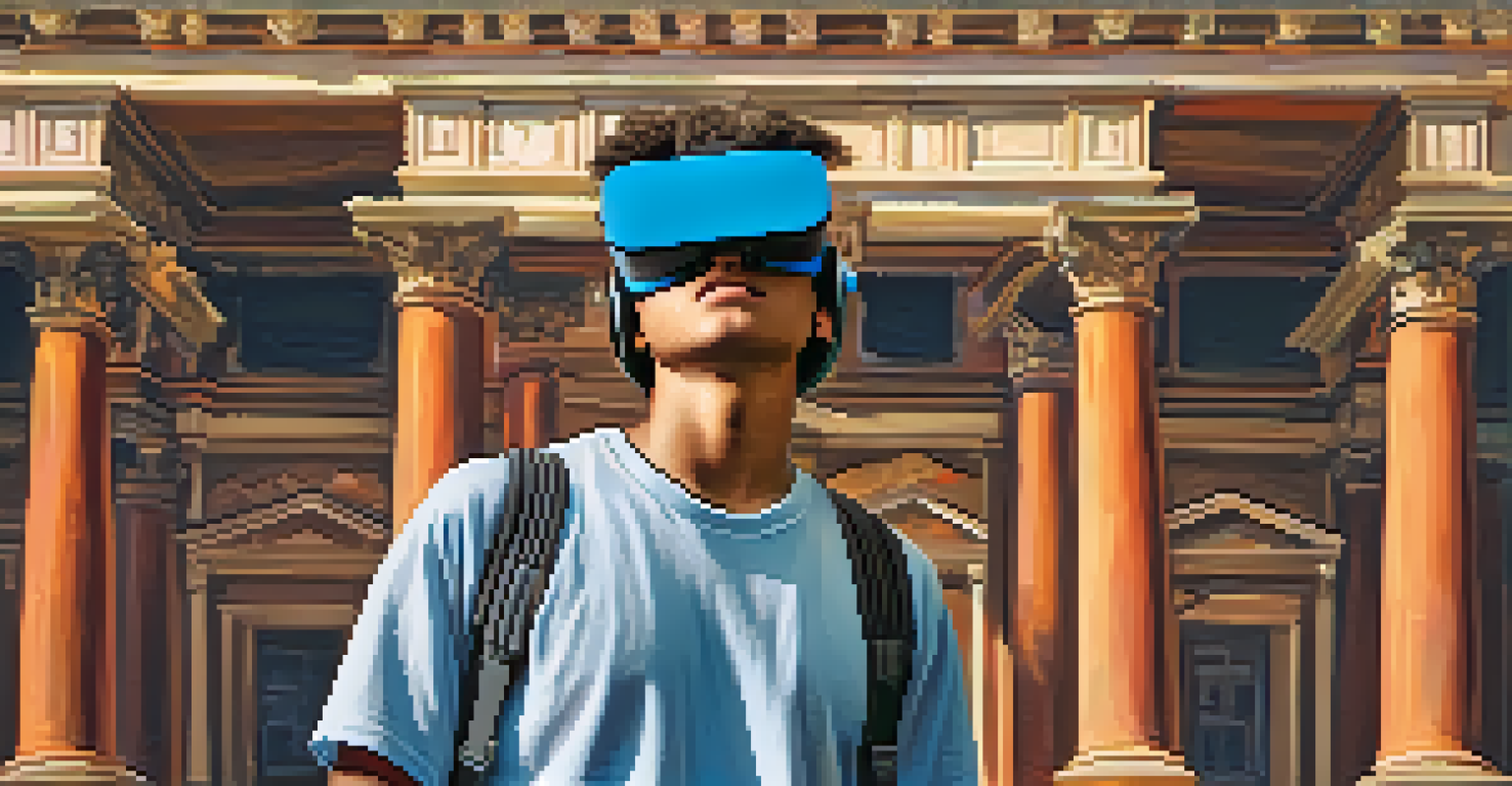Technological Tools for Enhancing Cognitive Development in Class

Understanding Cognitive Development in Education
Cognitive development refers to how students think, learn, and understand the world around them. It's a complex process that shapes how they solve problems, engage with content, and interact with peers. In the classroom, fostering cognitive growth is essential for preparing students for future challenges and opportunities.
Education is not the filling of a pail, but the lighting of a fire.
Teachers play a crucial role in this developmental journey, creating environments that stimulate curiosity and critical thinking. By integrating various teaching methods and technologies, they can cater to different learning styles and help students thrive. Understanding the tools available can empower educators to enhance these cognitive skills effectively.
As we delve into the technological tools that aid cognitive development, it’s important to remember that these resources should complement traditional teaching methods. The goal is to create a balanced approach that not only engages students but also encourages them to think critically and creatively.
The Role of Interactive Learning Platforms
Interactive learning platforms, like Kahoot! and Quizlet, offer engaging ways for students to participate in lessons. These platforms often include quizzes, games, and collaborative activities that promote active learning. By transforming lessons into fun challenges, they keep students motivated and focused.

For instance, Kahoot! allows teachers to create quizzes that students can answer in real-time, fostering a sense of community and competition. This type of engagement not only aids in retention but also sharpens cognitive skills like quick thinking and adaptability. The interactive nature encourages students to think on their feet, enhancing their problem-solving abilities.
Technology Enhances Learning
Incorporating interactive tools and educational apps fosters engagement and personalizes learning experiences for students.
Moreover, the instant feedback provided by these platforms helps students understand their strengths and areas for improvement. This iterative learning process is vital for cognitive development, as it encourages self-assessment and resilience in the face of challenges.
Utilizing Educational Apps for Personalized Learning
Educational apps like Duolingo and Khan Academy offer personalized learning experiences that cater to individual needs. These tools adapt to each student’s pace, providing tailored content that ensures they grasp concepts before moving on. This personalized approach is essential for effective cognitive development.
The beautiful thing about learning is that no one can take it away from you.
For example, Duolingo employs gamification to teach languages, making learning enjoyable and engaging. Students can track their progress and set goals, which fosters a sense of ownership over their learning journey. Such autonomy is crucial as it encourages critical thinking and self-directed learning.
Additionally, platforms like Khan Academy provide a wealth of resources, from video tutorials to practice exercises. This not only helps students reinforce their understanding but also encourages them to explore new topics at their own pace, nurturing their curiosity and cognitive growth.
Incorporating Virtual Reality in the Classroom
Virtual reality (VR) is making waves in education by providing immersive experiences that enhance cognitive development. By allowing students to explore environments and scenarios that are otherwise inaccessible, VR fosters deeper understanding and engagement. Imagine students walking through ancient Rome or exploring the human body in 3D!
These experiences are not just visually stimulating; they also promote critical thinking and problem-solving skills. For instance, a history lesson can transform into a virtual tour, where students must analyze artifacts and discuss their significance. This hands-on approach encourages active participation and enhances retention of information.
Collaboration Boosts Cognitive Skills
Using collaborative platforms allows students to work together in real-time, enhancing their teamwork, communication, and critical thinking abilities.
As VR technology continues to evolve, its potential in the classroom becomes even more promising. By integrating VR into lesson plans, educators can create memorable experiences that not only captivate students' attention but also encourage exploration and inquiry.
Gamification: Making Learning Fun and Engaging
Gamification is a powerful tool in education that uses game elements to enhance learning experiences. By incorporating points, levels, and rewards into lessons, teachers can motivate students to engage more deeply with the material. This approach taps into students' natural love for games, making learning feel less like a chore.
For example, platforms like Classcraft turn the classroom into a game where students earn rewards for academic achievements and positive behavior. This not only fosters a sense of community but also encourages collaboration and teamwork, essential skills for cognitive development.
Moreover, gamification can help students develop resilience as they navigate challenges within the game. Learning to overcome obstacles in a game context translates to real-life scenarios, where problem-solving and persistence are vital.
Using Data Analytics to Track Progress
Data analytics tools provide educators with invaluable insights into student performance and cognitive development. By tracking progress over time, teachers can identify trends, strengths, and areas needing improvement. This data-driven approach allows for more informed instructional decisions.
For instance, platforms like Google Classroom offer analytics that reveal how students are performing on assignments and assessments. This information can help educators tailor their teaching strategies to meet the diverse needs of their students. It promotes a proactive approach to learning, where interventions can be implemented early.
Gamification Makes Learning Fun
Integrating game elements into lessons motivates students and encourages resilience, making the learning process enjoyable and effective.
Additionally, sharing this data with students empowers them to take charge of their learning. Understanding their progress helps them set realistic goals and fosters a growth mindset, key components of cognitive development.
Collaborative Tools for Enhanced Communication
Collaboration is a cornerstone of cognitive development, and technological tools like Google Docs and Microsoft Teams facilitate this process. These platforms allow students to work together on projects in real-time, promoting teamwork and communication skills. As they collaborate, they also engage in critical thinking and problem-solving.
For example, Google Docs enables multiple students to edit a document simultaneously, encouraging discussion and idea sharing. This collaborative environment teaches students how to express their thoughts clearly and consider others' perspectives, enhancing their overall cognitive abilities.

Furthermore, these tools also prepare students for the modern workforce, where collaboration is crucial. By honing their teamwork skills in school, students become better equipped to tackle group projects and challenges in their future careers.
Conclusion: Embracing Technology for Cognitive Growth
Incorporating technology in the classroom is not just about keeping up with trends; it’s about enhancing cognitive development. By utilizing interactive platforms, educational apps, VR, gamification, data analytics, and collaborative tools, educators can create dynamic learning environments. This approach not only engages students but also equips them with essential skills for the future.
As we embrace these technological tools, it’s crucial to maintain a balance with traditional teaching methods. The goal is to create a holistic educational experience that nurtures curiosity, critical thinking, and creativity. In doing so, we prepare students not just for exams, but for lifelong learning.
Ultimately, the future of education lies in our ability to adapt and innovate. By embracing technology thoughtfully, we can foster an environment that supports cognitive development and inspires students to reach their full potential.